This recipe for light and fluffy Homemade Potato Bread makes two soft loaves that are great for sandwiches, toast, or just sliced warm out of the oven with butter and jam! It's an easy way of using up your favorite leftover mashed potatoes!
Some of our other favorites bread recipes are Sweet Molasses Brown Bread, Homemade French Bread, and Easy Homemade Rye Bread.
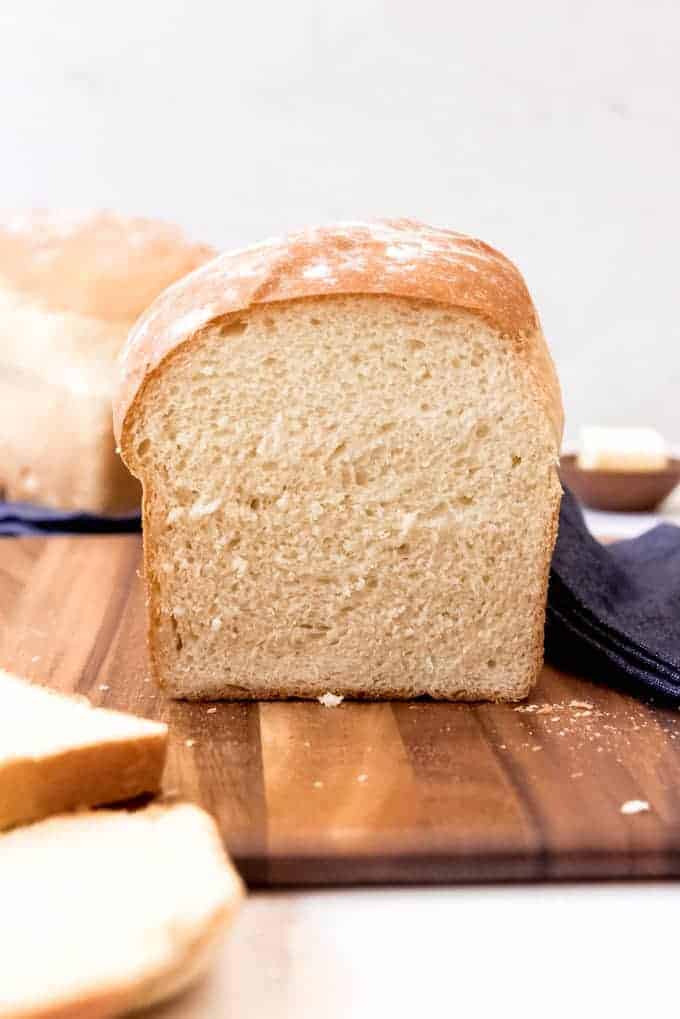
Homemade Potato Bread
There is nothing like a loaf of made-from-scratch, homemade bread! Store-bought bread cannot hold a candle to it. This potato bread recipe is makes a wonderful white bread that is perfect for having on hand to make your favorite sandwiches.
If you have never tried potato bread, it has a wonderful texture and flavor thanks to the mashed potatoes that keep it extra light and fluffy. I'm notorious for making way too many mashed potatoes, so this recipe comes in handy for using up some of those leftovers so they don't go to waste.
I also think homemade bread is great for gifting to friends and neighbors, especially with a jar of homemade strawberry jam!
I wanted to include this potato bread for my collection of Idaho-inspired recipes as part of my American Eats series where I am cooking my way across America, one state at a time! Idaho is famous for it's potatoes, so I thought it would be fun to showcase them in a different way than we normally see.
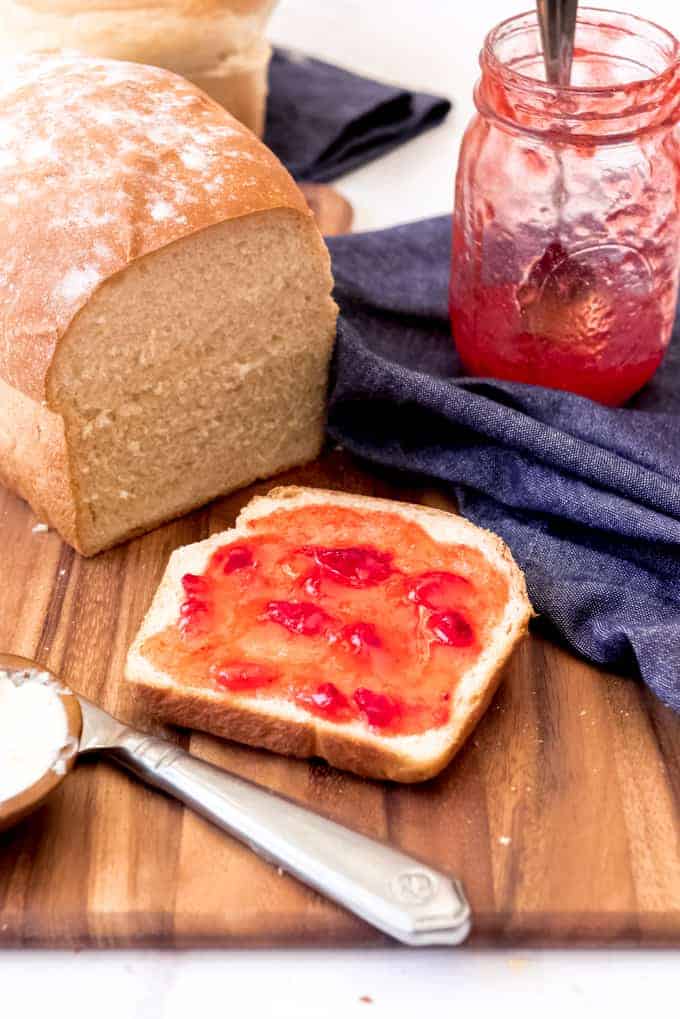
How to Make Potato Bread
- Make mashed potatoes. Either use leftover mashed potatoes or peel, chop, and boil 1 potato in salted water until it is fork tender. Drain well, then mash.
- Proof yeast in warm water with a little sugar. Combine a little sugar and warm water in a bowl, then stir in yeast and let it sit for 5-10 minutes until it is foamy. If the yeast doesn't bubble up, it likely needs to be replaced.
- Mix all of the bread ingredients. First combine the yeast with the milk, eggs, butter, salt, and 2 cups of the flour. Beat with the paddle attachment of a stand mixer, then switch to the dough hook and knead, adding additional flour ½ cup at a time until a nice soft dough forms. Knead on medium-low speed for 6 minutes.
- Let dough rise. Transfer the dough to a lightly greased bowl and cover with plastic wrap or a clean cloth. Let rise 1-1 ½ hours, until doubled in size. This is the traditional method, but I have a couple options for speeding things up below.
- Punch down and shape into loaves. Squeeze off half of the dough then shape it into an oblong loaf using your hands. Place it into a lightly greased bread pan, turning it so that the smooth side is on top. Repeat with the other half of the dough to make a second loaf of bread. Cover and let the loaves rise for 30-60 minutes.
- Bake until golden brown on top. Preheat oven to 350 degrees F. Just before baking, I like to brush the tops of each loaf with a little water using a pastry brush, then sprinkle them with a little extra flour. This is both decorative and provides an interesting texture to the top crust, but it's optional. Bake for 35 minutes until golden brown on top and cooked through.
- Cool in pans for 5-10 minutes before turning out onto a wire cooling rack to cool completely. Store in an airtight container.
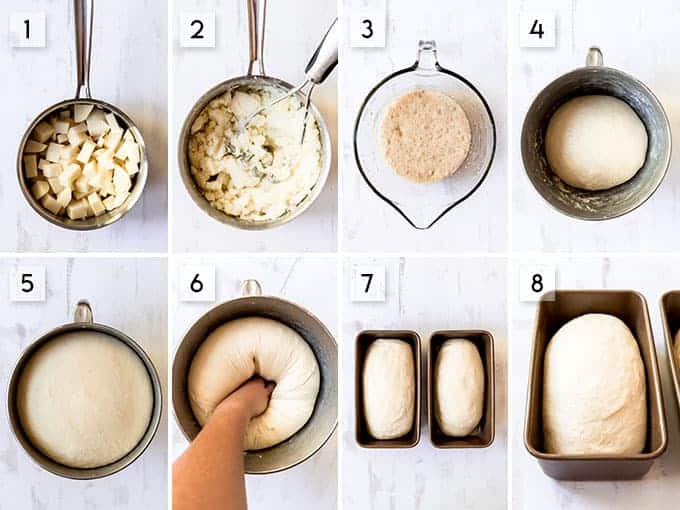
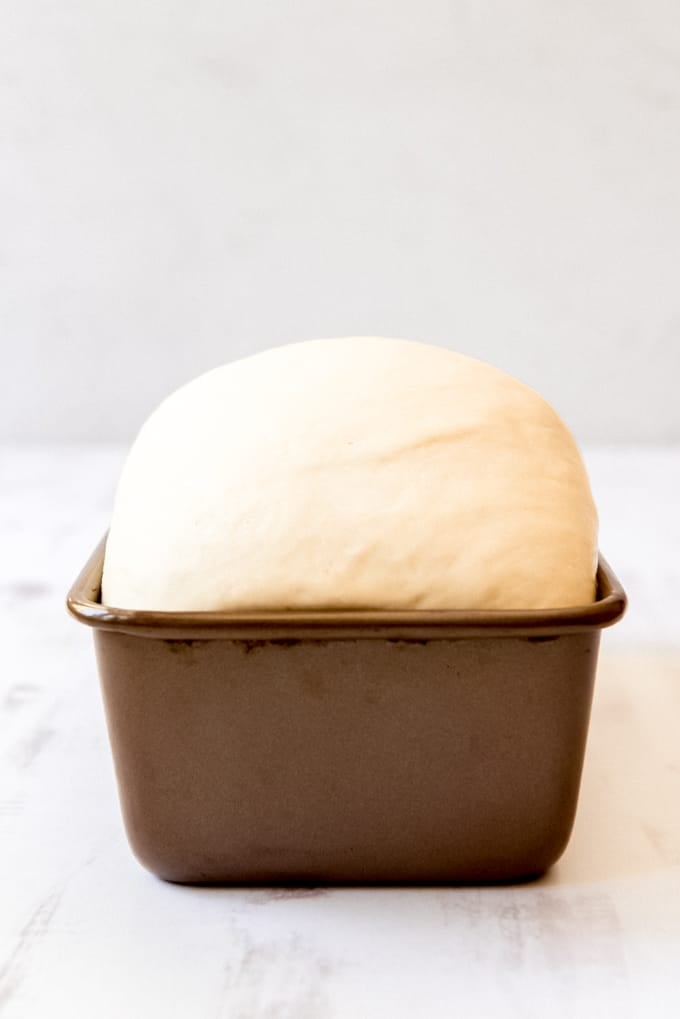
Two options to help your potato bread dough rise faster
If your house is cool, it will take your bread dough longer to rise. Bread needs a nice, warm place to rise well and traditional methods will take anywhere from 1-2 hours depending on what the temperature is like in your house. That's still totally an option here, but if you are in a rush, I've got a couple other options for speeding up the process!
How to Proof Bread in the Instant Pot
One trick is to let the bread proof in an Instant Pot with a yogurt setting. Just grease the liner of your instant pot with a little oil (about 2 teaspoons, but I always just eyeball it) and transfer the dough to it. Roll the dough around so it's lightly coated with the oil.
Press the Yogurt button and make sure that the Instant Pot is set to 'normal', then cover with a glass lid and let the dough proof for 20-30 minutes until doubled in size.
How to Proof Bread in a Warm Oven
Another option, for anyone who does not have an Instant Pot or doesn't have one with a yogurt setting, is trick to making sure you have a nice, warm place for your bread dough to rise is to turn your oven on to it's lowest setting for 4 minutes. Then turn off the oven and place the bowl of dough inside, covered with a towel, and close the door. Just don't forget to turn off the oven!

Tips for the Best Potato Bread
- Make sure you are using fresh yeast. If it doesn't bubble and foam, your yeast is probably old and your bread won't rise properly.
- You can absolutely use leftover homemade mashed potatoes! It's what I do most often rather than boiling and mashing a potato just to make a loaf of bread. Some potato bread recipes say to only use plain mashed potatoes that haven't had anything added to them like butter or cream, but I think it turns out just fine. Plus, it lets me use up leftovers. The only exception is if you have garlic mashed potatoes or ones that have been seasoned with herbs or other flavors, in which case I would boil and mash a fresh potato.
- Kneading can be done by hand, but it's much easier in a stand mixer fitted with a dough hook.
- I recommend using bread flour for this recipe as it gives a chewier texture to the bread, but I have made this with all-purpose flour as well and it still turns out good. I haven't tried substituting any part of the flour with whole wheat flour yet though, but if you give it a try, let me know how it turns out!
- Dusting flour on top of the bread is optional, but I love the finish it gives. Another choice is to rub the top of the finished loaves with a stick of softened butter so they have a buttery flavor, which is what I do with my Amish white bread.
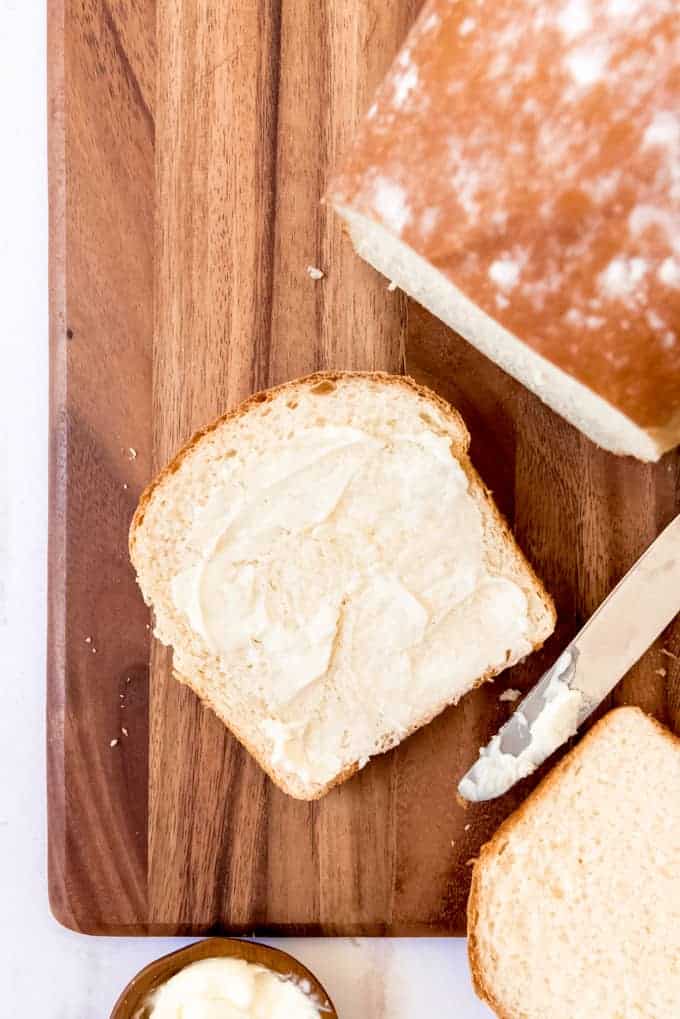
More Homemade Bread Recipes You'll Love
- Sweet Molasses Brown Bread
- Homemade French Bread
- Roasted Garlic & Rosemary No Knead Artisan Bread
- Easy Rosemary Focaccia Bread
- Easy Homemade Rye Bread
- Best Challah Bread Recipe
- Glazed Apple Fritter Yeast Bread
- Cheesy Garlic Mozzarella Swirl Rolls
- Sourdough Bread
Did you make this recipe?
Let me know what you thought with a comment and rating below. You can also take a picture and tag me on Instagram @houseofnasheats or share it on the Pinterest pin so I can see.
Potato Bread
Ingredients
- 1 cup water, lukewarm
- ⅓ cup granulated sugar
- 1 Tablespoon active dry yeast
- 1 ½ cups mashed potatoes
- ¾ cup whole milk
- 2 large eggs
- ½ cup salted butter, softened
- 2 teaspoons salt
- 6 ½ to 7 cups bread flour
Instructions
- In a medium bowl, combine the warm water, sugar, and yeast. Let it sit for 5-10 minutes until the yeast bubbles and is foamy on top.
- In a large bowl of a stand mixer fitted with a paddle attachment, combine the proofed yeast with the mashed potatoes, milk, eggs, butter, salt, and 2 cups of flour. Beat until combined, about 1 minute.
- Switch the paddle attachment for the dough hook and begin to knead the dough on medium-low speed, adding additional flour 1 cup at a time until incorporated to make a soft, slightly sticky dough. Knead on medium-low speed for 6-8 minutes until smooth.
- Transfer to a clean bowl that has been lightly greased with 1-2 teaspoons of oil oiled. Cover with plastic wrap or a clean cloth, then let the dough rise in a warm spot for 60-90 minutes until doubled in size.
- When the dough has risen, make a fist and punch the dough down right in the center to let out air. Pinch the dough in half and shape into 2 loaves by shaping into oblong balls. Place each ball of dough into a bread pan that has been sprayed with cooking spray.
- Cover loaves again with plastic wrap or a clean cloth and let them rise for another 30-60 minutes.
- Preheat oven to 350°F. Just before baking, brush the tops of each loaf with a little water using a pastry brush and sprinkle with a little flour for decoration.
- Bake at 350°F for 35-40 minutes until golden brown on top.
- Let cool in the loaf pans for 5-10 minutes before turning out onto a wire rack to finish cooling. Store in an airtight container.
Notes
Nutrition
More States I Have Visited in my American Eats Series
Alabama • Alaska • Arizona • Arkansas • California • Colorado • Connecticut • Delaware • Florida • Georgia • Hawaii • Idaho • Illinois • Indiana • Iowa • Kansas • Kentucky • Louisiana • Maine • Maryland • Massachusetts • Michigan • Minnesota • Mississippi • Missouri • Montana • Nebraska • New Jersey • New York • Oregon • Puerto Rico • South Carolina • South Dakota • Texas • Utah • Wisconsin
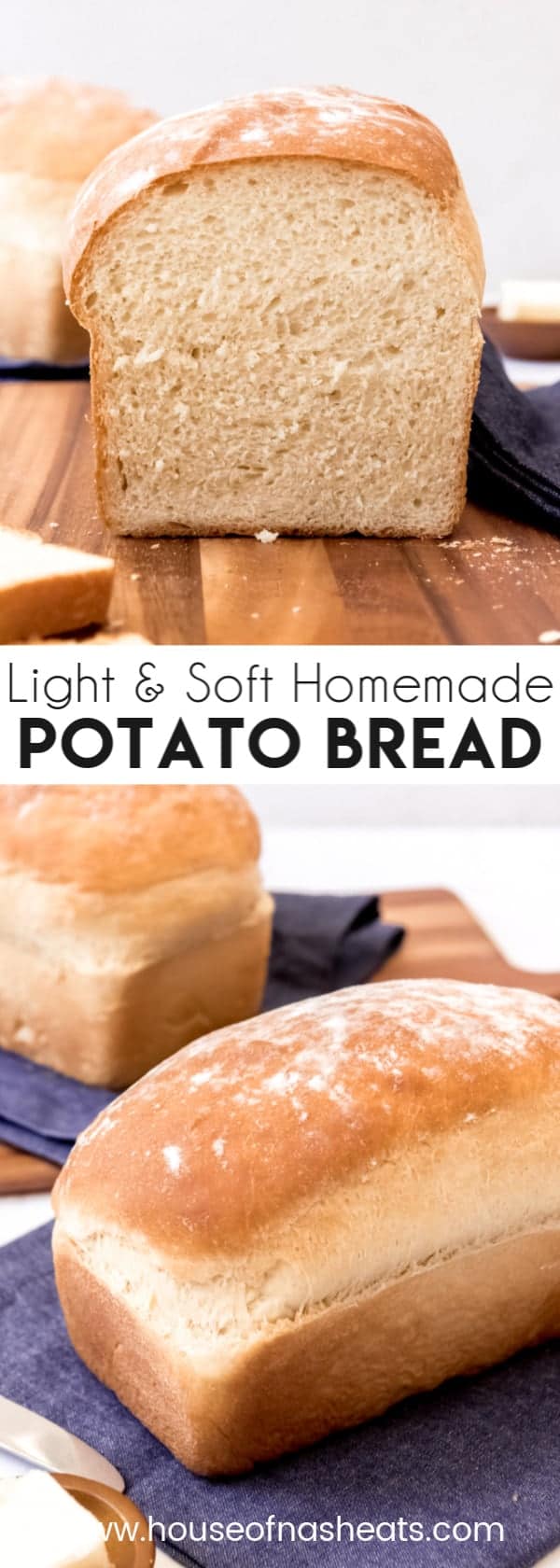


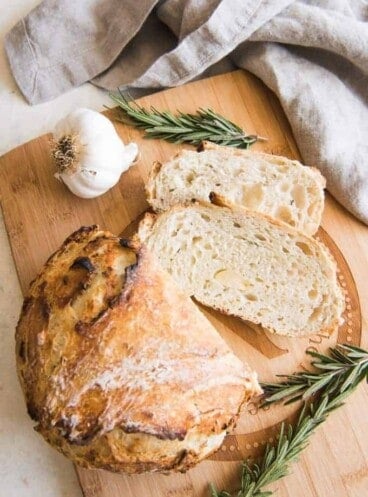
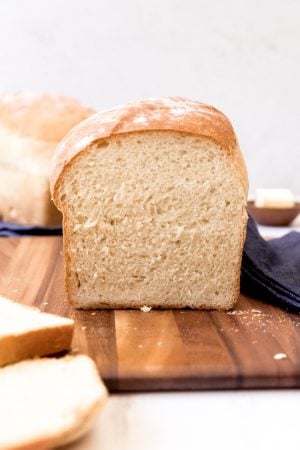

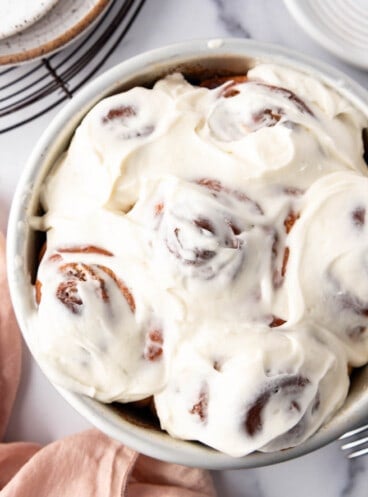
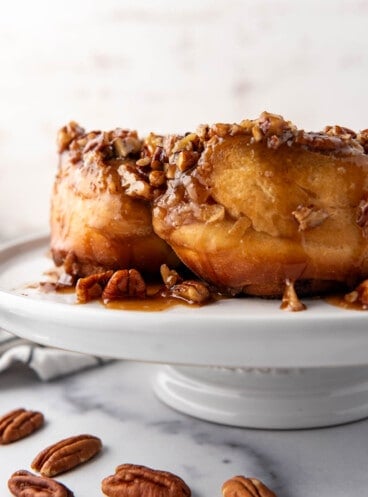
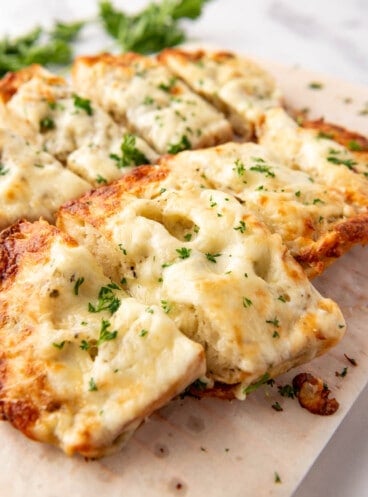

I used a cup of whole wheat flour and it turned out great.
I’ve tried to make this now 5 times and it just won’t rise 🙁
Oh no! I'm really sorry to hear that! Are you using leftover mashed potatoes or cooking them fresh? Because if they are leftover and have too much salt in them, that could be a possible culprit. Or maybe the potatoes are just too heavy, in which case you might want to scale the amount back slightly. I wish I was there to help because I have never had a problem with this bread rising for me!
Too much salt will kill the yeast where added extra sugar liven the yeast to activate the yeast., if the water is to hot it will kill the yeast.
Made it for the first time today and it came out perfect!
What size bread pan do you use?
It's a 9 1/2-inch loaf pan.
Can I substitute the mashed potato with potato flour, what is the amount? How much do I have to increase the total of milk liquid?
I haven't tried working with potato flour, so I'm really not sure on this one. Sorry!
Potato flour is a great additive, up to one tablespoon per cup of flour. It helps structure, and it extends the bread’s shelf life for a surprisingly long time without mold, and still pretty soft. I don’t refrigerate loaves, that really sucks out the moisture. I use it ever time to good results.
Potato flour is without gluten to give the bread structure, so it won’t work in a normal flour recipe as a sub. King Arthur (where I got the potato flour) has recipes that are written to use potato flour.
I have used potato flour, it’s very good flour to work with, the potato flour they use in raised donuts.
After the first proofing rise that is the 60 - 90 minutes, do you think I can form the dinner rolls balls and put in freezer bag. When needed I would take out and let rise the second (last) time. I know this recipe is for bread but they made delicious rolls also. Great recipe. Thank you.
Makes great cinnamon rolls
Can I use instant yeast for my potatoe bread
Yes.
Would you use your method (60-90 min 1st rise) or use the instant yeast method?
I prefer the 60-90 minute rise.
This is the first white bread recipe (besides no knead bread) i have ever tried and it turned out perfect! I am so proud of myself. I even made rolls with the dough and they turned out so awesome!
Thanks so much for the recipe!
That's fantastic! I'm so happy that it turned out so well for you!
OMG ......this bread is so light and airy!
It will be go recipe every time I have
Leftover mash potatoes. Thank you
Have you ever used instant potatoes?
No I haven't, but if they are prepared I am sure they would work just fine.
I have!! Several times in fact. They work just fine and are quick and easy. My husband loves this bread so much he brought home a jumbo box of Idahoan plain potato flakes so I would never run out LOL
Makes the most beautiful crumb and best tasting bread. It’s a little bit heavy but it’s basically a sweet dough so that is expected. I enjoyed making this recipe and working with the dough. I will definitely make again and possibly try baking in different flavors like cheddar and rosemary.
I love the idea of adding cheddar and rosemary!
Just an observation for now. I will check in and let you know how my white whole wheat 1/2 and 1/2 with bread flour, comes out.
I just want to suggest to ALL the great online bakers and their recipes that they post, that everyone starts to *always* note size(s) of loaf pans. I know it is almost all standard loaf pan size, but t would be a good addition.
This bread is wonderful. It made 3 large French bread style loaves. So pillowy soft. Flavor was great. Will be my new go to recipe. I love the fact that it stays soft as left overs
This was fab!! Perfect toast bread!